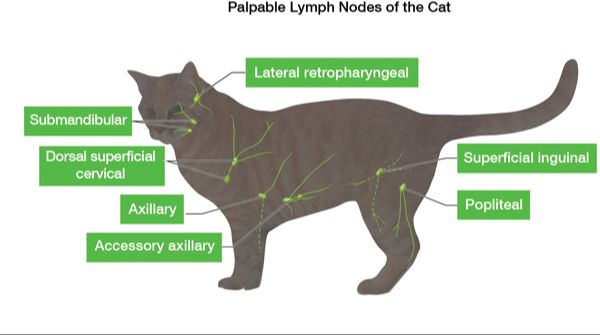What is Cat Scratch Fever?
Cat scratch fever, also known as cat scratch disease, is an infection caused by the bacterium Bartonella henselae. It is transmitted to humans through scratches, bites, or exposure to fleas from infected cats. The disease gets its name from the fact that people typically become infected after being scratched by a cat.
Cat scratch fever is characterized by swollen lymph nodes, fever, headache, fatigue, and loss of appetite. A small bump or blister often forms at the initial site of the scratch or bite. The lymph nodes closest to the infected scratch or bite then become tender and swollen as the bacteria multiply and spread through the lymphatic system. Though the infection is generally benign and self-limiting, complications can occasionally occur. Proper treatment typically involves antibiotics.

According to the Centers for Disease Control and Prevention, around 12,000 people are diagnosed with cat scratch fever in the United States each year. It can affect people of any age but is more common in children and adolescents due to their increased exposure to cats. While the disease usually resolves on its own, it’s important to see a doctor for an accurate diagnosis and appropriate treatment when necessary.
Sources:
https://www.webmd.com/skin-problems-and-treatments/cat-scratch-fever
https://emedicine.medscape.com/article/214100-overview
Symptoms of Cat Scratch Fever
The most common symptoms of cat scratch fever include:1
- Redness, swelling, and pain at the scratch or bite site
- Fever
- Headache
- Fatigue
- Swollen lymph nodes near the scratch or bite
The scratch or bite marks usually appear first, with redness and swelling developing around the wound within 3-10 days. A fever and headache often follow shortly after. The lymph nodes closest to the scratch/bite will typically become swollen and tender around this time.
Fatigue and general feelings of being unwell are also common during the acute phase of cat scratch fever, which can last 2-4 weeks. The lymph node swelling may persist for several months after other symptoms subside.
While the scratch or bite site is uncomfortable, the systemic symptoms of fever, headache, and fatigue usually cause more severe discomfort with cat scratch fever.
Does Cat Scratch Fever Itch?
Yes, cat scratch fever often causes itching at the site of the cat scratch or bite. Within 3-10 days after a cat scratch or bite, a small red bump may form which can become itchy and irritated (Source). As the infection progresses, the scratch or bite site may develop blisters, scabs, and experience swelling and tenderness. The itching and irritation at the initial scratch or bite site is due to the immune system’s inflammatory response to the Bartonella henselae bacteria (Source).
In addition to itching at the scratch/bite site, swelling of the lymph nodes can also cause itching sensations. Lymph nodes near the original scratch or bite often become enlarged and painful within 1-3 weeks. The swelling puts pressure on nerves in the region, which can cause itchiness and discomfort (Source). Therefore, while the itching sensation usually starts at the scratch/bite site, it can spread to lymph nodes as they become inflamed due to the infection.
Overall, itching is a common symptom of cat scratch fever due to the body’s immune response. It usually starts at the scratch/bite site but can also occur along swollen lymph nodes. If itching persists or worsens, it is important to see a doctor to treat the underlying infection.
Diagnosing Cat Scratch Fever
Cat scratch fever is diagnosed based on symptoms and tests to confirm the infection. The first step is usually a physical exam by a doctor. They will look for signs of the disease like swollen lymph nodes, fever, fatigue, and rash or lesions at the scratch/bite site [1]. If cat scratch fever is suspected, the doctor may order blood tests to look for antibodies to Bartonella henselae. These antibodies can confirm an active or past infection[2].

If the diagnosis is still uncertain after a physical exam and blood test, the doctor may recommend removing some cells from an enlarged lymph node for examination and testing. This lymph node biopsy can definitively diagnose cat scratch fever by finding evidence of the bacteria[3].
Treating Cat Scratch Fever
In most cases of cat scratch fever, the infection resolves on its own without requiring treatment within 2-4 months. The cat scratch or bite should be thoroughly cleaned with soap and warm water to help prevent infection. Over-the-counter pain medication like acetaminophen or ibuprofen can help relieve swelling and discomfort at the scratch site or any swollen lymph nodes.
Antibiotics are only prescribed in cases of severe symptoms or complications. According to the American Academy of Family Physicians, azithromycin has been shown to be an effective antibiotic treatment for cat scratch disease if needed. Those with weakened immune systems may also require antibiotics.
It’s important to finish the full course of any prescribed antibiotics to fully clear the bacterial infection. Close follow up with a doctor is recommended to monitor symptoms and treatment effectiveness. Most healthy people recover fully within a few months even without antibiotics.
Preventing Cat Scratch Fever
There are some steps you can take to help prevent cat scratch fever:
Avoid rough play with cats. Engaging in rough play like wrestling can increase your risk of getting scratched or bitten. Be gentle when petting and playing with cats.
Keep cats flea-free. Fleas can transmit Bartonella bacteria between cats. Using monthly flea control products can help reduce flea infestations.
Promptly clean scratches or bites. If a cat does scratch or bite you, wash the area right away with soap and warm water. This can help flush out some of the bacteria before they have time to enter your skin.[1]
Risk Factors for Cat Scratch Fever
There are certain factors that can increase your risk of developing cat scratch fever:
- Being around stray or outdoor cats. Stray and outdoor cats are more likely to carry the Bartonella henselae bacteria that causes cat scratch fever. Indoor cats kept as pets are less likely to be infected (https://www.hopkinsmedicine.org/health/conditions-and-diseases/cat-scratch-disease).
- Having a weakened immune system. People with compromised immune systems, such as those with HIV/AIDS or those taking immunosuppressant medications after an organ transplant, are more susceptible to developing cat scratch fever (https://my.clevelandclinic.org/health/diseases/23537-cat-scratch-fever). The immune system plays an important role in fighting off infections.
Other potential risk factors include being a child or adult under 20 years old, owning a kitten younger than 1 year old, and rough play with cats resulting in bites or scratches (https://www.cdc.gov/bartonella/bartonella-henselae/faq.html). Proper hand washing after interacting with cats may help reduce the risk of transmission.
Complications of Cat Scratch Fever
Cat scratch fever usually causes mild symptoms that resolve on their own, but in some cases it can lead to serious complications. The most concerning potential complications of cat scratch disease are:
Encephalitis

Encephalitis is inflammation of the brain that occurs in about 1% of cat scratch fever cases. Symptoms include severe headache, fever, confusion, seizures, and altered consciousness 1. Encephalitis requires hospitalization and intravenous antibiotics. Most patients fully recover with treatment, but permanent neurological damage is possible in severe cases.
Meningitis
Meningitis, inflammation of the membranes surrounding the brain and spinal cord, happens in 5-10% of patients 2. Symptoms are similar to encephalitis. Meningitis is serious but usually responds well to antibiotic treatment.
Arthritis
About 10% of people with cat scratch fever develop joint pain and arthritis several weeks or months after infection 3. The arthritis usually affects the knees but can occur in other joints too. Symptoms include swelling, redness, and severe pain. Antibiotics can help resolve the arthritis.
While rare, cat scratch fever can occasionally have severe complications. Seek prompt medical care if symptoms seem concerning. With appropriate treatment, most people recover fully.
Cat Scratch Fever in Children
Cat scratch fever is more common in children than adults. According to the Children’s Hospital of Philadelphia, over 50% of cat scratch disease cases occur in children under the age of 12. The disease is usually milder in children compared to adults.
Symptoms in children may include:<
- Fever
- Fatigue
- Headache
- Poor appetite
- Swollen lymph nodes near the scratch or bite
While adults often develop more severe symptoms, the symptoms in children tend to be more mild. According to Stanford Children’s Health, only 10% of children with cat scratch disease develop complications such as abscesses, arthritis, or encephalopathy.
With appropriate treatment, most children fully recover within 2-4 months. However, parents should monitor the child’s symptoms and watch for any signs of complications. Seeking prompt medical attention can help prevent serious illness.
To help prevent cat scratch fever, parents should teach children proper hygiene around cats and avoid rough play. Scratches should be promptly washed. Restricting very young children from handling cats can also reduce risk. Vaccination of cats against Bartonella henselae may provide some protection as well (Source).

When to See a Doctor
In most cases, cat scratch fever symptoms are mild and can be managed at home. However, you should see a doctor if you experience concerning or severe symptoms, including:
- Fever over 102°F (38.9°C), according to the Johns Hopkins Medicine
- Severe headache or fatigue, per the CDC
- Facial swelling, which can indicate the infection has spread, according to the Cleveland Clinic
- No improvement in symptoms after 1 week, as noted by the Johns Hopkins Medicine
Seeking timely medical care is crucial for proper diagnosis and treatment if cat scratch fever becomes severe. Your doctor can check for complications and prescribe antibiotics if needed. Prompt medical attention may help prevent the infection from getting worse or spreading.
